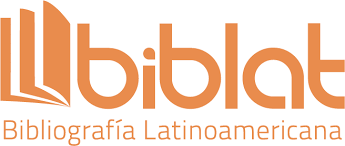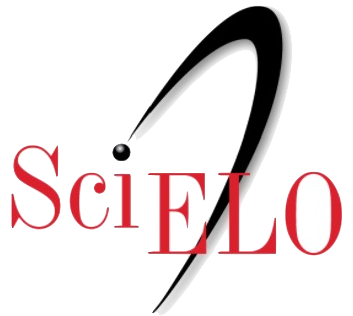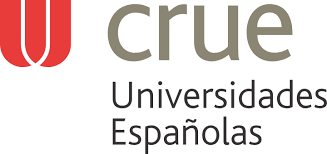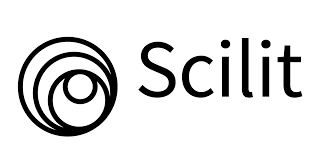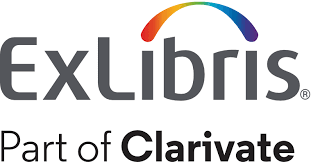Tratamientos para la remoción de antibacteriales y agentes antimicrobiales presentes en aguas residuales
DOI:
https://doi.org/10.22335/rlct.v9i1.370Palabras clave:
Sustancias Emergentes, Aguas Residuales, Condiciones ExperimentalesResumen
El abundante uso de sustancias emergentes microcontaminantes y su inadecuada disposición final, han centrado la atención de las autoridades ambientales en los efectos que sobre el ambiente, se le atribuyen a los antibacteriales y agentes antimicrobiales vertidos en los cuerpos de agua. Actualmente, diversas investigaciones han centrado sus objetivos en determinar las eficiencias que distintos tratamientos físicos, químicos y biológicos presentan para remover diferentes productos farmacéuticos incluidos los anteriormente mencionados. Esta revisión incluye resultados de diversos tratamientos a nivel de microcosmo, mesocosmo y a escala real, en los que se incluyen las principales condiciones experimentales en que se desarrollan las mediciones.
Descargas
Referencias
Adamek, E., Baran, W., & Sobczak, A. (2016). Photocatalytic degradation of veterinary antibiotics: Biodegradability and antimicrobial activity of intermediates. Process Safety and Environmental Protection, 103, Part A, 1-9. doi: http://dx.doi.org/10.1016/j.psep.2016.06.015
Al-Odaini, N. Zakaria, M. Yaziz, M. Surif, S. 2010. Multi-residue analytical method for human pharmaceuticals and synthetic hormones in river water and sewage effluents by solid-phase extraction and liquid chromatography–tandem mass spectrometry. Journal of Chromatography A, 1217. 6791–6806.
Álvarez-Torrellas, S., Rodríguez, A., Ovejero, G., & García, J. (2016). Comparative adsorption performance of ibuprofen and tetracycline from aqueous solution by carbonaceous materials. Chemical Engineering Journal, 283, 936-947. doi: http://dx.doi.org/10.1016/j.cej.2015.08.023
Azhar, M. R., Abid, H. R., Sun, H., Periasamy, V., Tadé, M. O., & Wang, S. (2016). Excellent performance of copper based metal organic framework in adsorptive removal of toxic sulfonamide antibiotics from wastewater. Journal of Colloid and Interface Science, 478, 344-352. doi: http://dx.doi.org/10.1016/j.jcis.2016.06.032
Borges, M. E., Sierra, M., Cuevas, E., García, R. D., & Esparza, P. (2016). Photocatalysis
Çalışkan Salihi, E., & Mahramanlıoğlu, M. (2014). Equilibrium and kinetic adsorption of drugs on bentonite: Presence of surface active agents effect. Applied Clay Science, 101, 381-389. doi: http://dx.doi.org/10.1016/j.clay.2014.06.015
Çalışkan Salihi, E., & Mahramanlıoğlu, M. (2014). Equilibrium and kinetic adsorption of drugs on bentonite: Presence of surface active agents effect. Applied Clay Science, 101, 381-389. doi: http://dx.doi.org/10.1016/j.clay.2014.06.015
Chen, J., Wei, X.-D., Liu, Y.-S., Ying, G.-G., Liu, S.-S., He, L.-Y., . . . Yang, Y.-Q. (2016). Removal of antibiotics and antibiotic resistance genes from domestic sewage by constructed wetlands: Optimization of wetland substrates and hydraulic loading. Science of The Total Environment, 565, 240-248. doi: http://dx.doi.org/10.1016/j.scitotenv.2016.04.176
Chen, J., Ying, G.-G., Wei, X.-D., Liu, Y.-S., Liu, S.-S., Hu, L.-X., . . . Yang, Y.-Q. (2016). Removal of antibiotics and antibiotic resistance genes from domestic sewage by constructed wetlands: Effect of flow configuration and plant species. Science of The Total Environment, 571, 974-982. doi: http://dx.doi.org/10.1016/j.scitotenv.2016.07.085
Chen, X., Fang, C. Q., & Wang, X. (2017). The influence of surface effect on vibration behaviors of carbon nanotubes under initial stress. Physica E: Low-dimensional Systems and Nanostructures, 85, 47-55. doi: http://dx.doi.org/10.1016/j.physe.2016.08.011
Cheng, X. Q., Zhang, C., Wang, Z. X., & Shao, L. (2016). Tailoring nanofiltration membrane performance for highly-efficient antibiotics removal by mussel-inspired modification. Journal of Membrane Science, 499, 326-334. doi: http://dx.doi.org/10.1016/j.memsci.2015.10.060
Choi, K.-J., Kim, S.-G., & Kim, S.-H. (2008). Removal of antibiotics by coagulation and granular activated carbon filtration. Journal of Hazardous Materials, 151(1), 38-43. doi: http://dx.doi.org/10.1016/j.jhazmat.2007.05.059
Choi, Y.-J., Kim, L.-H., & Zoh, K.-D. (2016). Removal characteristics and mechanism of antibiotics using constructed wetlands. Ecological Engineering, 91, 85-92. doi: http://dx.doi.org/10.1016/j.ecoleng.2016.01.058
Devreese, M., Osselaere, A., Goossens, J., Vandenbroucke, V., De Baere, S., De Backer, P., & Croubels, S. (2012). Interaction between tylosin and bentonite clay from a pharmacokinetic perspective. The Veterinary Journal, 194(3), 437-439. doi: http://dx.doi.org/10.1016/j.tvjl.2012.05.016
Ding, H., Wu, Y., Zou, B., Lou, Q., Zhang, W., Zhong, J., . . . Dai, G. (2016). Simultaneous removal and degradation characteristics of sulfonamide, tetracycline, and quinolone antibiotics by laccase-mediated oxidation coupled with soil adsorption. Journal of Hazardous Materials, 307, 350-358. doi: http://dx.doi.org/10.1016/j.jhazmat.2015.12.062
Elmolla, E. S., & Chaudhuri, M. (2010). Photocatalytic degradation of amoxicillin, ampicillin and cloxacillin antibiotics in aqueous solution using UV/TiO2 and UV/H2O2/TiO2 photocatalysis. Desalination, 252(1–3), 46-52. doi: http://dx.doi.org/10.1016/j.desal.2009.11.003
Exall, K., Balakrishnan, V. K., Toito, J., & McFadyen, R. (2013). Impact of selected wastewater constituents on the removal of sulfonamide antibiotics via ultrafiltration and micellar enhanced ultrafiltration. Science of The Total Environment, 461–462, 371-376. doi: http://dx.doi.org/10.1016/j.scitotenv.2013.04.057
Fernández, A. M. L., Rendueles, M., & Díaz, M. (2014). Sulfamethazine retention from water solutions by ion exchange with a strong anionic resin in fixed bed.Separation Science and Technology (Philadelphia),49(9), 1366-1378. doi:10.1080/01496395.2013.879666
Gabarrón, S., Gernjak, W., Valero, F., Barceló, A., Petrovic, M., & Rodríguez-Roda, I. (2016). Evaluation of emerging contaminants in a drinking water treatment plant using electrodialysis reversal technology. Journal of Hazardous Materials, 309, 192-201. doi: http://dx.doi.org/10.1016/j.jhazmat.2016.02.015
Gao, Y., Li, Y., Zhang, L., Huang, H., Hu, J., Shah, S. M., & Su, X. (2012). Adsorption and removal of tetracycline antibiotics from aqueous solution by graphene oxide. Journal of Colloid and Interface Science, 368(1), 540-546. doi: http://dx.doi.org/10.1016/j.jcis.2011.11.015
García-Vaquero, N., Lee, E., Jiménez Castañeda, R., Cho, J., & López-Ramírez, J. A. (2014). Comparison of drinking water pollutant removal using a nanofiltration pilot plant powered by renewable energy and a conventional treatment facility. Desalination, 347, 94-102. doi: http://dx.doi.org/10.1016/j.desal.2014.05.036
Gautam, S., Shandilya, P., Priya, B., Singh, V. P., Raizada, P., Rai, R., . . . Singh, P. (2017). Superparamagnetic MnFe2O4 dispersed over graphitic carbon sand composite and bentonite as magnetically recoverable photocatalyst for antibiotic mineralization. Separation and Purification Technology, 172, 498-511. doi: http://dx.doi.org/10.1016/j.seppur.2016.09.006
Genç, N., & Dogan, E. C. (2015). Adsorption kinetics of the antibiotic ciprofloxacin on bentonite, activated carbon, zeolite, and pumice. Desalination and Water Treatment, 53(3), 785-793. doi:10.1080/19443994.2013.842504
Genç, N., Dogan, E. C., & Yurtsever, M. (2013). Bentonite for ciprofloxacin removal from aqueous solution. Water Science and Technology, 68(4), 848-855. doi:10.2166/wst.2013.313
Guo, R. Chen, J. 2015. Application of alga-activated sludge combined system (AASCS) as a novel treatment to remove cephalosporins, Chemical Engineering Journal, 260, 15, 550-556, ISSN 1385-8947, http://dx.doi.org/10.1016/j.cej.2014.09.053.
Guo, W. Zheng, H. Li, S. Du, J. Feng, X. Yin, R. Wu, Q. Ren, N. Chang, J. 2016. Removal of cephalosporin antibiotics 7-ACA from wastewater during the cultivation of lipid-accumulating microalgae, Bioresource Technology, 221, 284-290, ISSN 0960-8524, http://dx.doi.org/10.1016/j.biortech.2016.09.036.
Hijosa-Valsero, M., Fink, G., Schlüsener, M. P., Sidrach-Cardona, R., Martín-Villacorta, J., Ternes, T., & Bécares, E. (2011). Removal of antibiotics from urban wastewater by constructed wetland optimization. Chemosphere, 83(5), 713-719. doi: http://dx.doi.org/10.1016/j.chemosphere.2011.02.004
Hsu, S., & Singer, P. C. (2010). Removal of bromide and natural organic matter by anion exchange. Water Research, 44(7), 2133-2140. doi: http://dx.doi.org/10.1016/j.watres.2009.12.027
Huang, X. Zheng, J. Liu, C. Liu, L. Liu, Y. Fan, H. 2017. Removal of antibiotics and resistance genes from swine wastewater using vertical flow constructed wetlands: Effect of hydraulic flow direction and substrate type, Chemical Engineering Journal, 308, 15, 692-699, http://dx.doi.org/10.1016/j.cej.2016.09.110.
Hussain, S. A., Prasher, S. O., & Patel, R. M. (2012). Removal of ionophoric antibiotics in free water surface constructed wetlands. Ecological Engineering, 41, 13-21. doi: http://dx.doi.org/10.1016/j.ecoleng.2011.12.006
Jadhav, S. V., Marathe, K. V., & Rathod, V. K. (2016). A pilot scale concurrent removal of fluoride, arsenic, sulfate and nitrate by using nanofiltration: Competing ion interaction and modelling approach. Journal of Water Process Engineering, 13, 153-167. doi: http://dx.doi.org/10.1016/j.jwpe.2016.04.008
Jardim, W. Montagner, C. Pescara, I. Umbuzeiro, G. Bergamasco, A. Eldridge, M. Sodré, F. 2012. An integrated approach to evaluate emerging contaminants in drinking water, Separation and Purification Technology, 84, 9 3-8, http://dx.doi.org/10.1016/j.seppur.2011.06.020.
Jia, S., Yang, Z., Ren, K., Tian, Z., Dong, C., Ma, R., . . . Yang, W. (2016). Removal of antibiotics from water in the coexistence of suspended particles and natural organic matters using amino-acid-modified-chitosan flocculants: A combined experimental and theoretical study. Journal of Hazardous Materials, 317, 593-601. doi: http://dx.doi.org/10.1016/j.jhazmat.2016.06.024
Jia, S., Yang, Z., Yang, W., Zhang, T., Zhang, S., Yang, X., . . . Wang, Y. (2016). Removal of Cu(II) and tetracycline using an aromatic rings-functionalized chitosan-based flocculant: Enhanced interaction between the flocculant and the antibiotic. Chemical Engineering Journal, 283, 495-503. doi: http://dx.doi.org/10.1016/j.cej.2015.08.003
Jiménez, V., Sánchez, P., & Romero, A. (2017). 2 - Materials for activated carbon fiber synthesis A2 - Chen, Jonathan Y Activated Carbon Fiber and Textiles (pp. 21-38). Oxford: Woodhead Publishing.
Khan, M. I., Zheng, C., Mondal, A. N., Hossain, M. M., Wu, B., Emmanuel, K., . . . Xu, T. (2017). Preparation of anion exchange membranes from BPPO and dimethylethanolamine for electrodialysis. Desalination, 402, 10-18. doi: http://dx.doi.org/10.1016/j.desal.2016.09.019
Kim, H., Hwang, Y. S., & Sharma, V. K. (2014). Adsorption of antibiotics and iopromide onto single-walled and multi-walled carbon nanotubes. Chemical Engineering Journal, 255, 23-27. doi: http://dx.doi.org/10.1016/j.cej.2014.06.035
Kleywegt, S. Pileggi, V. Yang, P. Hao, C. Zhao, X. Thach, S. Cheung, P & Whitehead, B. 2011. Pharmaceuticals, hormones and bisphenol A in untreated source and finished drinking water in Ontario, Canada — Occurrence and treatment efficiency. Science of the Total Environment 409, 1481–1488
Li, J., Xu, X., Liu, X., Qin, W., Wang, M., & Pan, L. (2017). Metal-organic frameworks derived cake-like anatase/rutile mixed phase TiO2 for highly efficient photocatalysis. Journal of Alloys and Compounds, 690, 640-646. doi: http://dx.doi.org/10.1016/j.jallcom.2016.08.176
Li, S. Z., Li, X. Y., Cui, Z. F., & Wang, D. Z. (2004). Application of ultrafiltration to improve the extraction of antibiotics. Separation and Purification Technology, 34(1–3), 115-123. doi: http://dx.doi.org/10.1016/S1383-5866(03)00185-0
Li, S.-z., Li, X.-y., & Wang, D.-z. (2004). Membrane (RO-UF) filtration for antibiotic wastewater treatment and recovery of antibiotics. Separation and Purification Technology, 34(1–3), 109-114. doi: http://dx.doi.org/10.1016/S1383-5866(03)00184-9
Liu, J., Wu, S., Lu, Y., Liu, Q., Jiao, Q., Wang, X., & Zhang, H. (2016). An integrated electrodialysis-biocatalysis-spray-drying process for efficient recycling of keratin acid hydrolysis industrial wastewater. Chemical Engineering Journal, 302, 146-154. doi: http://dx.doi.org/10.1016/j.cej.2016.05.046
Liu, P., Zhang, H., Feng, Y., Yang, F., & Zhang, J. (2014). Removal of trace antibiotics from wastewater: A systematic study of nanofiltration combined with ozone-based advanced oxidation processes. Chemical Engineering Journal, 240, 211-220. doi: http://dx.doi.org/10.1016/j.cej.2013.11.057
Lu, H., Zou, W., Chai, P., Wang, J., & Bazinet, L. (2016). Feasibility of antibiotic and sulfate ions separation from wastewater using electrodialysis with ultrafiltration membrane. Journal of Cleaner Production, 112, Part 4, 3097-3105. doi: http://dx.doi.org/10.1016/j.jclepro.2015.09.091
Luo, Y., Guo, W., Ngo, H. H., Nghiem, L. D., Hai, F. I., Zhang, J., . . . Wang, X. C. (2014). A review on the occurrence of micropollutants in the aquatic environment and their fate and removal during wastewater treatment. Science of the Total Environment, 473-474, 619-641. doi: 10.1016/j.scitotenv.2013.12.065
Martins, A. C., Pezoti, O., Cazetta, A. L., Bedin, K. C., Yamazaki, D. A. S., Bandoch, G. F. G., . . . Almeida, V. C. (2015). Removal of tetracycline by NaOH-activated carbon produced from macadamia nut shells: Kinetic and equilibrium studies. Chemical Engineering Journal, 260, 291-299. doi: http://dx.doi.org/10.1016/j.cej.2014.09.017
Mohammadi, A., Kazemipour, M., Ranjbar, H., Walker, R. B., & Ansari, M. (2015). Amoxicillin Removal from Aqueous Media Using Multi-Walled Carbon Nanotubes. Fullerenes, Nanotubes and Carbon Nanostructures, 23(2), 165-169. doi: 10.1080/1536383X.2013.866944
Moussavi, G., Alahabadi, A., Yaghmaeian, K., & Eskandari, M. (2013). Preparation, characterization and adsorption potential of the NH4Cl-induced activated carbon for the removal of amoxicillin antibiotic from water. Chemical Engineering Journal, 217, 119-128. doi: http://dx.doi.org/10.1016/j.cej.2012.11.069
Ncibi, M. C., & Sillanpää, M. (2015). Optimized removal of antibiotic drugs from aqueous solutions using single, double and multi-walled carbon nanotubes. Journal of Hazardous Materials, 298, 102-110. doi: http://dx.doi.org/10.1016/j.jhazmat.2015.05.025
Nourani, M., Baghdadi, M., Javan, M., & Bidhendi, G. N. (2016). Production of a biodegradable flocculant from cotton and evaluation of its performance in coagulation-flocculation of kaolin clay suspension: Optimization through response surface methodology (RSM). Journal of Environmental Chemical Engineering, 4(2), 1996-2003. doi: http://dx.doi.org/10.1016/j.jece.2016.03.028
Ouaissa, Y. A., Chabani, M., Amrane, A., & Bensmaili, A. (2014). Removal of tetracycline by electrocoagulation: Kinetic and isotherm modeling through adsorption. Journal of Environmental Chemical Engineering, 2(1), 177-184. doi: http://dx.doi.org/10.1016/j.jece.2013.12.009
Pan, M., & Chu, L. M. (2016). Adsorption and degradation of five selected antibiotics in agricultural soil. Science of The Total Environment, 545–546, 48-56. doi: http://dx.doi.org/10.1016/j.scitotenv.2015.12.040
Peng, Y. Hall, S. Gautam, L. 2016. Drugs of abuse in drinking water - a review of current detection methods, occurrence, elimination and health risks, TrAC Trends in Analytical Chemistry, Available online 28 September 2016, ISSN 0165-9936, http://dx.doi.org/10.1016/j.trac.2016.09.011.
Pouretedal, H. R., & Sadegh, N. (2014). Effective removal of Amoxicillin, Cephalexin, Tetracycline and Penicillin G from aqueous solutions using activated carbon nanoparticles prepared from vine wood. Journal of Water Process Engineering, 1, 64-73. doi: http://dx.doi.org/10.1016/j.jwpe.2014.03.006
Putra, E. K., Pranowo, R., Sunarso, J., Indraswati, N., & Ismadji, S. (2009). Performance of activated carbon and bentonite for adsorption of amoxicillin from wastewater: Mechanisms, isotherms and kinetics. Water Research, 43(9), 2419-2430. doi: http://dx.doi.org/10.1016/j.watres.2009.02.039
Rahardjo, A. K., Susanto, M. J. J., Kurniawan, A., Indraswati, N., & Ismadji, S. (2011). Modified Ponorogo bentonite for the removal of ampicillin from wastewater. Journal of Hazardous Materials, 190(1–3), 1001-1008. doi: http://dx.doi.org/10.1016/j.jhazmat.2011.04.052
Ren, M., Song, Y., Xiao, S., Zeng, P., & Peng, J. (2011). Treatment of berberine hydrochloride wastewater by using pulse electro-coagulation process with Fe electrode. Chemical Engineering Journal, 169(1–3), 84-90. doi: http://dx.doi.org/10.1016/j.cej.2011.02.056
S. Gabarrón, W. Gernjak, F. Valero, A. Barceló, M. Petrovic, I. Rodríguez. 2016. Evaluation of emerging contaminants in a drinking water treatment plant using electrodialysis reversal technology, Journal of Hazardous Materials, Volume 309, (15) 192-201, ISSN 0304-3894, http://dx.doi.org/10.1016/j.jhazmat.2016.02.015.
Saitoh, T., Shibata, K., & Hiraide, M. (2014). Rapid removal and photodegradation of tetracycline in water by surfactant-assisted coagulation–sedimentation method. Journal of Environmental Chemical Engineering, 2(3), 1852-1858. doi: http://dx.doi.org/10.1016/j.jece.2014.08.005
Serna-Galvis, E. A., Silva-Agredo, J., Giraldo, A. L., Flórez-Acosta, O. A., & Torres-Palma, R. A. (2016). Comparative study of the effect of pharmaceutical additives on the elimination of antibiotic activity during the treatment of oxacillin in water by the photo-Fenton, TiO2-photocatalysis and electrochemical processes. Science of The Total Environment, 541, 1431-1438. doi: http://dx.doi.org/10.1016/j.scitotenv.2015.10.029
Silva, H. Gonzaga, G. y Camargo, A. Monteiro, F. 2006. Efficiency of aquatic macrophytes to treat Nile tilapia pond effluents. Scientia Agricola, 63(5), 433-438
Tetracycline classes of antibiotic. Science of The Total Environment, 387(1–3), 247-256. doi: http://dx.doi.org/10.1016/j.scitotenv.2007.07.024
Tian, Y., Gao, B., Morales, V. L., Chen, H., Wang, Y., & Li, H. (2013). Removal of sulfamethoxazole and sulfapyridine by carbon nanotubes in fixed-bed columns. Chemosphere, 90(10), 2597-2605. doi: http://dx.doi.org/10.1016/j.chemosphere.2012.11.010
Tran, N. H., Li, J., Hu, J., & Ong, S. L. (2014). Occurrence and suitability of pharmaceuticals and personal care products as molecular markers for raw wastewater contamination in surface water and groundwater. Environmental Science and Pollution Research, 21(6), 4727-4740. doi: 10.1007/s11356-013-2428-9
Tran, Ngoc Han, Chen, Hongjie, Reinhard, Martin, Mao, Feijian, & Gin, Karina Yew-Hoong. (2016). Occurrence and removal of multiple classes of antibiotics and antimicrobial agents in biological wastewater treatment processes. Water Research, 104, 461-472. doi:http://dx.doi.org/10.1016/j.watres.2016.08.040
Urtiaga, A. M., Pérez, G., Ibáñez, R., & Ortiz, I. (2013). Removal of pharmaceuticals from a WWTP secondary effluent by ultrafiltration/reverse osmosis followed by electrochemical oxidation of the RO concentrate. Desalination, 331, 26-34. doi: http://dx.doi.org/10.1016/j.desal.2013.10.010
Vergel Ortega, M., Martínez Lozano, J., & Zafra Tristancho, S. (2017). Cultivo de cebolla y su comportamiento en la provincia de Ocaña. Revista Colombiana de Ciencias Hortícolas, 10(2), 333-344. doi:https://doi.org/10.17584/rcch.2016v10i2.5070
Vidal, C. B., Seredych, M., Rodríguez-Castellón, E., Nascimento, R. F., & Bandosz, T. J. (2015). Effect of nanoporous carbon surface chemistry on the removal of endocrine disruptors from water phase. Journal of Colloid and Interface Science, 449, 180-191. doi: http://dx.doi.org/10.1016/j.jcis.2014.11.034
Wang, H., Yuan, X., Wu, Y., Zeng, G., Dong, H., Chen, X., . . . Peng, L. (2016). In situ synthesis of In2S3@MIL-125(Ti) core–shell microparticle for the removal of tetracycline from wastewater by integrated adsorption and visible-light-driven photocatalysis. Applied Catalysis B: Environmental, 186, 19-29. doi: http://dx.doi.org/10.1016/j.apcatb.2015.12.041
Wang, T., Pan, X., Ben, W., Wang, J., Hou, P., & Qiang, Z. Adsorptive removal of antibiotics from water using magnetic ion exchange resin. Journal of Environmental Sciences. doi: http://dx.doi.org/10.1016/j.jes.2016.03.017
Wang, W., Li, X., Yuan, S., Sun, J., & Zheng, S. (2016). Effect of resin charged functional group, porosity, and chemical matrix on the long-term pharmaceutical removal mechanism by conventional ion exchange resins. Chemosphere, 160, 71-79. doi: http://dx.doi.org/10.1016/j.chemosphere.2016.06.073
Wang, Y., Zhang, Z., Jiang, C., & Xu, T. (2016). Recovery of gamma-aminobutyric acid (GABA) from reaction mixtures containing salt by electrodialysis. Separation and Purification Technology, 170, 353-359. doi: http://dx.doi.org/10.1016/j.seppur.2016.07.002
Weng, X.-D., Ji, Y.-L., Ma, R., Zhao, F.-Y., An, Q.-F., & Gao, C.-J. (2016). Superhydrophilic and antibacterial zwitterionic polyamide nanofiltration membranes for antibiotics separation. Journal of Membrane Science, 510, 122-130. doi: http://dx.doi.org/10.1016/j.memsci.2016.02.070
with solar energy: Sunlight-responsive photocatalyst based on TiO2 loaded on a natural
Wu, H., Niu, X., Yang, J., Wang, C., & Lu, M. (2016). Retentions of bisphenol A and norfloxacin by three different ultrafiltration membranes in regard to drinking water treatment. Chemical Engineering Journal, 294, 410-416. doi: http://dx.doi.org/10.1016/j.cej.2016.02.117
Xu, J., Xu, W., Wang, D., Sang, G., & Yang, X. (2016). Evaluation of enhanced coagulation coupled with magnetic ion exchange (MIEX) in natural organic matter and sulfamethoxazole removals: The role of Al-based coagulant characteristic. Separation and Purification Technology, 167, 70-78. doi: http://dx.doi.org/10.1016/j.seppur.2016.05.007
Xu, L., Sun, Y., Du, L., & Zhang, J. (2014). Removal of tetracycline hydrochloride from wastewater by nanofiltration enhanced by electro-catalytic oxidation. Desalination, 352, 58-65. doi: http://dx.doi.org/10.1016/j.desal.2014.08.013
Yahiat, S., Fourcade, F., Brosillon, S., & Amrane, A. (2011). Removal of antibiotics by an integrated process coupling photocatalysis and biological treatment – Case of tetracycline and tylosin. International Biodeterioration & Biodegradation, 65(7), 997-1003. doi: http://dx.doi.org/10.1016/j.ibiod.2011.07.009
Yang, Z., Jia, S., Zhuo, N., Yang, W., & Wang, Y. (2015). Flocculation of copper(II) and tetracycline from water using a novel pH- and temperature-responsive flocculants. Chemosphere, 141, 112-119. doi: http://dx.doi.org/10.1016/j.chemosphere.2015.06.050
Yazdanbakhsh, A. R., Massoudinegad, M. R., Eliasi, S., & Mohammadi, A. S. (2015). The influence of operational parameters on reduce of azithromyin COD from wastewater using the peroxi -electrocoagulation process. Journal of Water Process Engineering, 6, 51-57. doi: http://dx.doi.org/10.1016/j.jwpe.2015.03.005
Zaidi, S., Chaabane, T., Sivasankar, V., Darchen, A., Maachi, R., & Msagati, T. A. M. Electro-coagulation coupled electro-flotation process: Feasible choice in doxycycline removal from pharmaceutical effluents. Arabian Journal of Chemistry. doi: http://dx.doi.org/10.1016/j.arabjc.2015.06.009
Zaidi, S., Chaabane, T., Sivasankar, V., Darchen, A., Maachi, R., Msagati, T. A. M., & Prabhakaran, M. (2016). Performance efficiency of electro-coagulation coupled electro-flotation process (EC-EF) versus adsorption process in doxycycline removal from aqueous solutions. Process Safety and Environmental Protection, 102, 450-461. doi: http://dx.doi.org/10.1016/j.psep.2016.04.013
Zaidi, S., Chaabane, T., Sivasankar, V., Darchen, A., Maachi, R., & Msagati, T. A. M. Electro-coagulation coupled electro-flotation process: Feasible choice in doxycycline removal from pharmaceutical effluents. Arabian Journal of Chemistry. doi: http://dx.doi.org/10.1016/j.arabjc.2015.06.009
Zhang, X., Guo, W., Ngo, H. H., Wen, H., Li, N., & Wu, W. (2016). Performance evaluation of powdered activated carbon for removing 28 types of antibiotics from water. Journal of Environmental Management, 172, 193-200. doi: http://dx.doi.org/10.1016/j.jenvman.2016.02.038
Publicado
Número
Sección
Licencia
Esta revista provee acceso libre e inmediato a su contenido (https://creativecommons.org/licenses/by-nc-nd/4.0/), bajo el principio de hacer disponible gratuitamente la investigación al público y apoyar a un mayor intercambio de conocimiento global.

